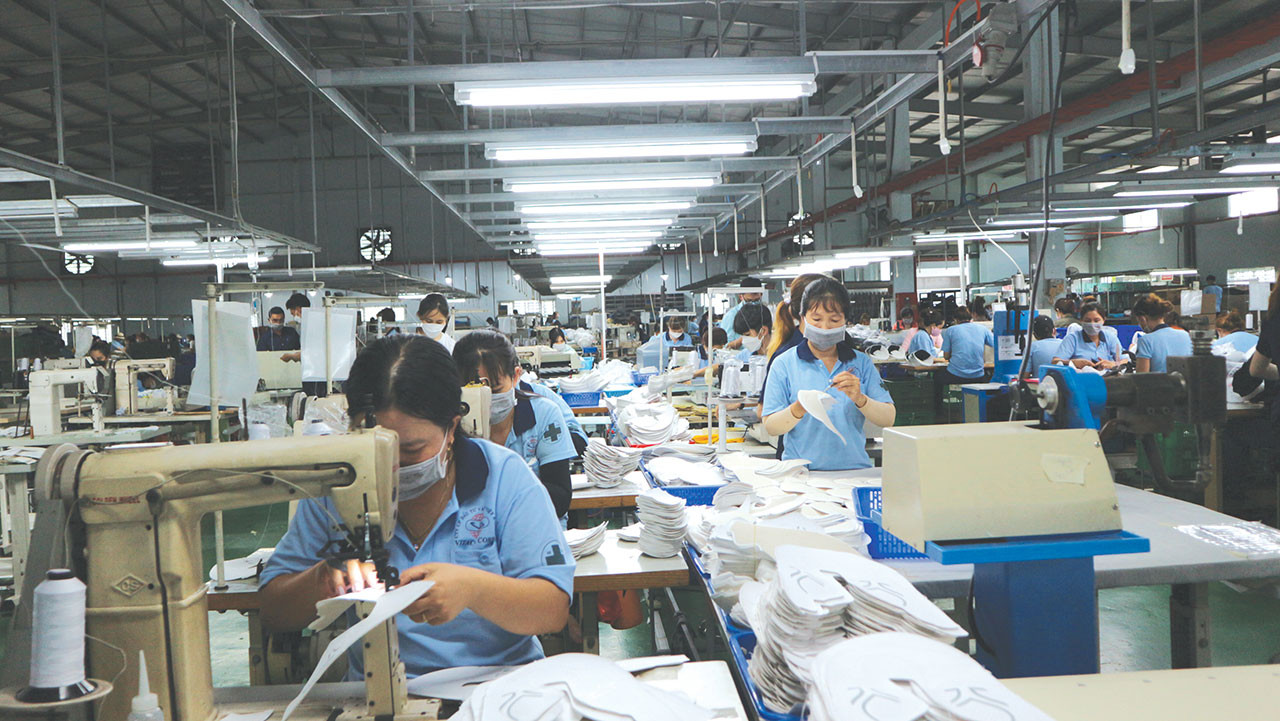
A long-standing state of affairs
As stated in the World Bank’s Systematic Country Diagnostic Update 2021, Vietnam performs reasonably well in some aspects but still lags behind others by international measures.
Vietnam has the highest ratio of enterprises, especially SMEs, constrained by limited access to credit in the area. About one-third of Vietnam’s enterprises have huge difficulty accessing bank credit, higher than one-fourth of the countries worldwide.
This state of affairs has been recognized and addressed for years, but little progress has been made.
Together with agriculture, exports, supporting industries and high-tech businesses, SMEs have been put in priority sectors. There are eight types of assistance which SMEs receive from the Government, including assistance in access to credit, credit guarantee funds for SMEs; assistance in tax and accounting regimes; assistance in production areas; assistance in terms of technologies, incubators, technical establishments and co-space; assistance in expansion into markets; assistance in access to information, consultancy, and legal issues; and assistance in developing human resources.
Specifically on credit activities, the State Bank of Vietnam has imposed a ceiling interest rate significantly lower for priority sectors than other sectors. The ceiling interest rate has constantly been reduced over the years, from 13-15%/year in 2021 to 4.5%/year currently.
However, SMEs still struggle with access to credit, which affects their operational efficiency, as stated by the World Bank. Meanwhile, as a developing economy, Vietnam currently has about 785,000 SMEs, accounting for more than 98% of the country’s enterprises, 70% of laborers, 45% of GDP and 31% of the total budget revenue. However, the debts of SMEs in Vietnam only account for a small ratio in total debt.
Why is that?
In fact, a large proportion of wholesale banks’ funds is allocated to economic groups and state-owned enterprises. Besides, some of the largest banks invest most of their funds in government bonds, which at some point leads to a crowding out effect when the investing and spending demand of the Government rises.
Meanwhile, retail banks focus on personal loans for consumption and real estate investment thanks to a higher interest rate and the increasing land price. Real estate collateral is considered low-risk.
According to the World Bank, while SMEs’ access to credit is tough, is it more accessible for bigger businesses in the private sector. The value of Vietnam’s domestic credit granted to the private sector, amounting to 130% of the nation’s GDP, is the highest among lower middle-income countries, on par with more advanced countries and remains the highest compared to countries at a similar level of development.
Therefore, banks are no longer under pressure to quickly disburse investment capital to borrowers, especially SMEs. Particularly, the approval process of SME loans has some restrictions and entails risks as these enterprises lack transparency and maintain two sets of books for accounting. Banks carry out businesses’ financial appraisals based only on the financial reports they submit to tax departments. However, these reports mostly record losses.
More importantly, banks always prefer loans with collateral, such as real estate and vehicles, which SMEs simply can’t afford. Some banks consider collateral as a mandatory condition and take other factors for granted.
Solutions?
From the above mentioned problems, in order to improve credit access for SMEs, it is recommended that enterprises stop keeping two sets of books. Transparent statistics and financial reports will help banks avoid ethical risks due to asymmetrical information and also ease the approval process. This is not unachievable. Let us look at another example – the long-standing two-price system in land transactions comes under stricter scrutiny.
Secondly, capital flow into high-risk sectors such as real estate should be controlled and capital credit should be granted for priority sectors such as manufacturing, supporting industries and SMEs. Besides, capital efficiency in state-owned groups and enterprises should be evaluated to prevent them from crowding out the private enterprises, mainly SMEs, in obtaining credit.
In addition, the Government needs to improve credit guarantee schemes for SMEs. Government-backed credit guarantee funds are established in provinces. Currently, as per Decree 34/2018/ND-CP, local credit guarantee funds for SMEs need minimum capital of VND1 billion. While big cities such as HCMC and Hanoi can afford this, it is impossible for other remote provinces.
The total number of local credit guarantee funds for SMEs is 28, with total capital of VND1,500 billion. Therefore, the capital is split up and the scale of funds is too small to guarantee SMEs. Meanwhile, one of the five conditions the funds must comply with as per Decree 34 is guarantee with collateral, which is quite unreasonable since a guarantee means 100% unsecured or non-collateral.
Other countries’ experience
In China, innovation funds for technology-based SMEs are established to boost credit support for SMEs. They issue regulations, encourage the establishment of SMEs and highlight the creation of a level playing field for SMEs. The government procurement encourages business contracts between state agencies and SMEs.
The Bank of China also encourages credit institutions to loosen credit approval standards for SMEs with a good credit score. It also requires banks to maintain the SMEs’ loan growth rate the same as or higher than the average loan growth rate and lower risk-weighted assets for SMEs loans.
Thailand has established the asset capitalization bureau to lessen loan collateral problems. The objective of this strategy is to increase more funding opportunities for firms, especially retail businesses and small enterprises, by allowing potential assets occupied by households and firms to be used as collateral for loans.
Source: SGT